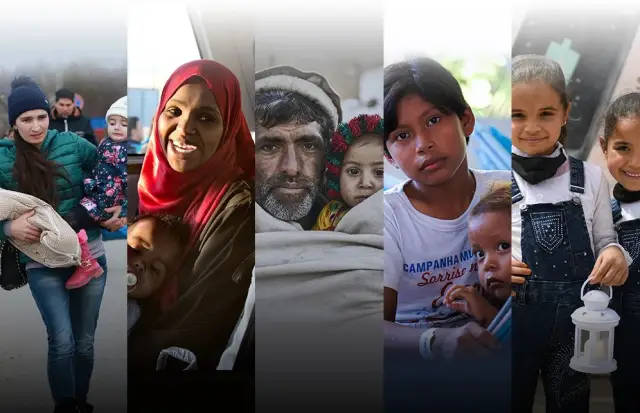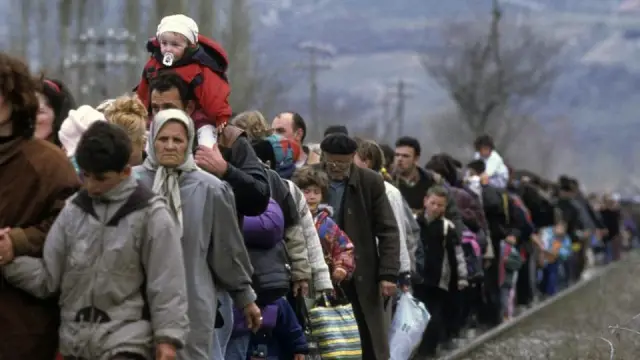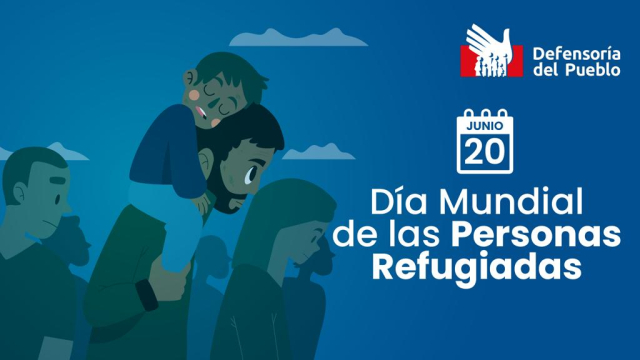World Refugee Day , commemorated every June 20, represents a global opportunity to recognize the strength, courage, and hope of millions of people forced to flee their countries due to persecution, armed conflict, widespread violence, or human rights violations. In the Peruvian context, this date takes on special relevance due to the significant increase in migration and refugee flows that the country has experienced in recent years. Due to its geographic location, relative institutional stability, and historical ties with Venezuela, Peru has become one of the main destinations for people fleeing the Venezuelan humanitarian crisis. Currently, more than 1.5 million Venezuelans reside in Peru, and more than 532,000 have applied for asylum , making the country one of the largest recipients of refugee applications globally.
This article examines the reality of refugees in Peru , the institutional and social challenges they face, and the opportunities to strengthen their inclusion. By understanding the context and taking informed action, every citizen and organization can contribute to a more just, supportive, and resilient society.
Current context in Peru
1. Magnitude of the phenomenon
The migration phenomenon in Peru has taken on unprecedented dimensions. At the regional level, the country has the second largest number of Venezuelan refugees and migrants , behind only Colombia. In total, more than 551,000 asylum applications have been registered since 2003, reflecting a growing trend that has transformed the country's demographic and social landscape. Although the majority of applicants come from Venezuela, there are also people from countries such as Haiti, Colombia, Cuba, and other regions of Africa and Asia who have requested international protection in Peru.
This influx has put pressure on public institutions, especially in urban areas such as Lima, Trujillo, Arequipa, and Tumbes, where the majority of the refugee population is concentrated. However, it has also generated a rich cultural diversity and significant potential in terms of workforce development, entrepreneurship, and revitalization of local communities.
2. Social perceptions
Peruvian society has historically shown a welcoming and supportive attitude toward those seeking asylum. According to studies conducted in 2022, 83% of Peruvians support the right of people to seek asylum. However, this positive perception coexists with stigmas and prejudices that hinder the full integration of refugees. For example, 74% of respondents believe that refugees and migrants abuse state services , and a worrying 46% believe that the borders should be closed to more foreigners.
These figures reveal an urgent need for civic education, information campaigns, and awareness-raising mechanisms that help clearly differentiate between economic migrants and refugees and highlight the positive contribution these individuals can make to the country's development.

Challenges and ongoing actions
A. Humanitarian action and multisectoral response
Faced with the growing number of refugees and migrants, various international and national institutions have launched a coordinated, multisectoral response. In 2024, the Regional Refugee and Migrant Response Plan (RMRP) was activated, involving 113 organizations , including United Nations agencies, NGOs, government institutions, and refugee-led groups.
This plan aims to address the urgent needs of 1 million people in vulnerable situations, providing access to health services, education, legal support, job integration, and psychosocial care. In 2023, more than 510,000 people were directly benefited, of whom 83,000 were Peruvians living in extreme poverty , demonstrating that these actions also strengthen the local social and economic fabric.
B. Integration and reduction of xenophobia
In addition to humanitarian assistance, promoting long-term integration is essential. Strategies such as "Blue Night" have been implemented, an initiative that illuminates iconic buildings in Lima and other cities in blue as a show of solidarity with refugees. Sporting and cultural events are also organized to promote peaceful coexistence, such as the 6K race in support of refugees .
Another notable initiative is the "Abriendo Caminos" project, developed by World Vision in conjunction with UNHCR and the NGO Cedro. This program trains public officials and offers workshops on employability, entrepreneurship, and financial inclusion in regions such as Lima, Tumbes, Piura, and Tacna. Its community-based and inter-institutional approach demonstrates that collaboration is key to overcoming structural barriers.
C. Persistent obstacles
Despite progress, significant challenges remain. To date, only 4,937 people have officially received refugee status, compared to more than 541,000 applications submitted by Venezuelans, highlighting a gap in the mechanisms for recognizing and processing cases.
On the other hand, international funding for humanitarian assistance is insufficient. In 2024, more than USD 294 million was needed, but only 20% of the necessary funds have been raised, limiting coverage of essential services. Furthermore, acts of xenophobia, labor exploitation, and institutional discrimination persist, primarily affecting women, girls, and LGBTIQ+ refugees.

Good practices and recommendations
Promote immigration regularization:
Ensuring refugees have valid documents facilitates their inclusion in the labor market, access to healthcare and education, and reduces their vulnerability to exploitation. Temporary permits such as the Temporary Stay Permit Card (CPP) have been a step forward, but their renewal must be simplified.Strengthening inclusive public services:
Institutions must adapt their protocols to ensure care without discrimination. This includes training health, education, and justice personnel to adequately respond to the specific needs of the refugee population.Promote social awareness campaigns:
The public narrative must focus on refugees' stories of resilience and contributions, countering myths and prejudices. The active involvement of the media, schools, and businesses is essential to creating environments of respect and tolerance.Ensure sustainable financing:
Greater international co-responsibility is needed to respond to a crisis that is not only regional but global. Multilateral donors, the private sector, and governments must strengthen funding for assistance and integration.
Why does this day matter so much?
Commemorating World Refugee Day in Peru is more than a symbolic act; it is a call to action to build a country where the dignity and rights of all are respected. Refugees, like any citizen, have dreams, talents, and the desire to contribute positively to society. In a country marked by diversity and a history of migration, opening the doors to those seeking protection strengthens democratic values and reinforces the commitment to human rights.
The context of World Refugee Day in Peru reveals a complex situation, but also one full of possibilities. While structural challenges—such as lack of recognition, institutional overburden, and social prejudice—are real, so are the many initiatives aimed at inclusion and resilience. The country has the opportunity to become a regional benchmark in reception and integration if it continues to strengthen the legal framework, guarantee access to services, and actively combat xenophobia. From civil society, NGOs, the State, and ordinary citizens, we can all be agents of change in this humanitarian cause of global reach.
